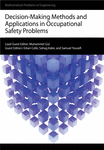Journal list menu
Export Citations
Download PDFs
Retraction
Open Access
oa
RETRACTION: Interactions among Cognitive Factors Affecting Unsafe Behavior: Integrative Fuzzy DEMATEL ISM Approach
- First Published: 18 September 2024
Research Article
Open Access
oa
Developing a Model for Safety Risk Assessment under Uncertainty for the Manufacturing Industry: A Case Study of Pole Factory Hazards in Riyadh, Saudi Arabia
- First Published: 19 March 2021
Research Article
Open Access
oa
Hospital Preparedness Assessment against COVID-19 Pandemic: A Case Study in Turkish Tertiary Healthcare Services
- First Published: 08 January 2021
Research Article
Open Access
oa
Interactions among Cognitive Factors Affecting Unsafe Behavior: Integrative Fuzzy DEMATEL ISM Approach
- First Published: 21 November 2020
Research Article
Open Access
oa
Fire Risk Assessment in Healthcare Settings: Application of FMEA Combined with Multi-Criteria Decision Making Methods
- First Published: 19 October 2020
Research Article
Open Access
oa
Attributes-Based Decision Making for Selection of Requirement Elicitation Techniques Using the Analytic Network Process
- First Published: 08 September 2020




